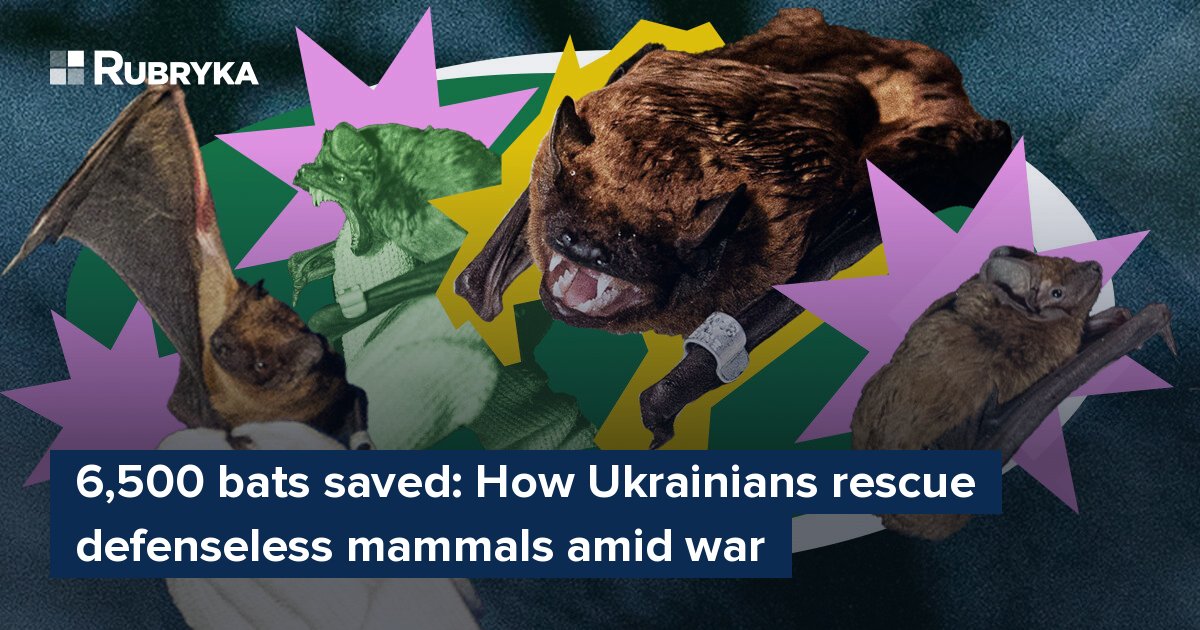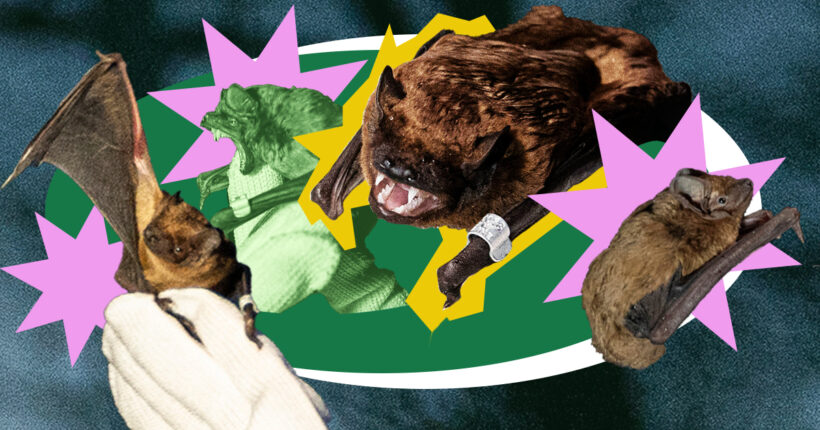
One April evening in one of the parks of the Ukrainian capital, Kyiv, an unusual sight unfolded—several dozen people stood on a small clearing with their hands raised. Some of them unexpectedly smiled, looked at the tree branches, lowered their hands, and then walked away. Above the scattered gathering, if you listened closely, you could hear occasional squeaks, and if you looked closely at the treetops, you could see small winged creatures silently slicing through the sky.

Ukrainian activists released 200 wild bats rescued this winter in the capital. The event was organized by the Ukrainian Bat Rehabilitation Center, which operates at the Feldman Eco Park in the northeastern city of Kharkiv. Similar events took place not only in Kyiv but also all over the country, in the cities of Zaporizhzhia, Kharkiv, Kryvyi Rih, Dnipro, Lviv, Kropyvnytskyi, Cherkasy, Kamianske, and Poltava. Volunteers in each of these cities saved bats this winter and handed them over to the Ukrainian Bat Rehabilitation Center. Now, they are being released back into the wild.
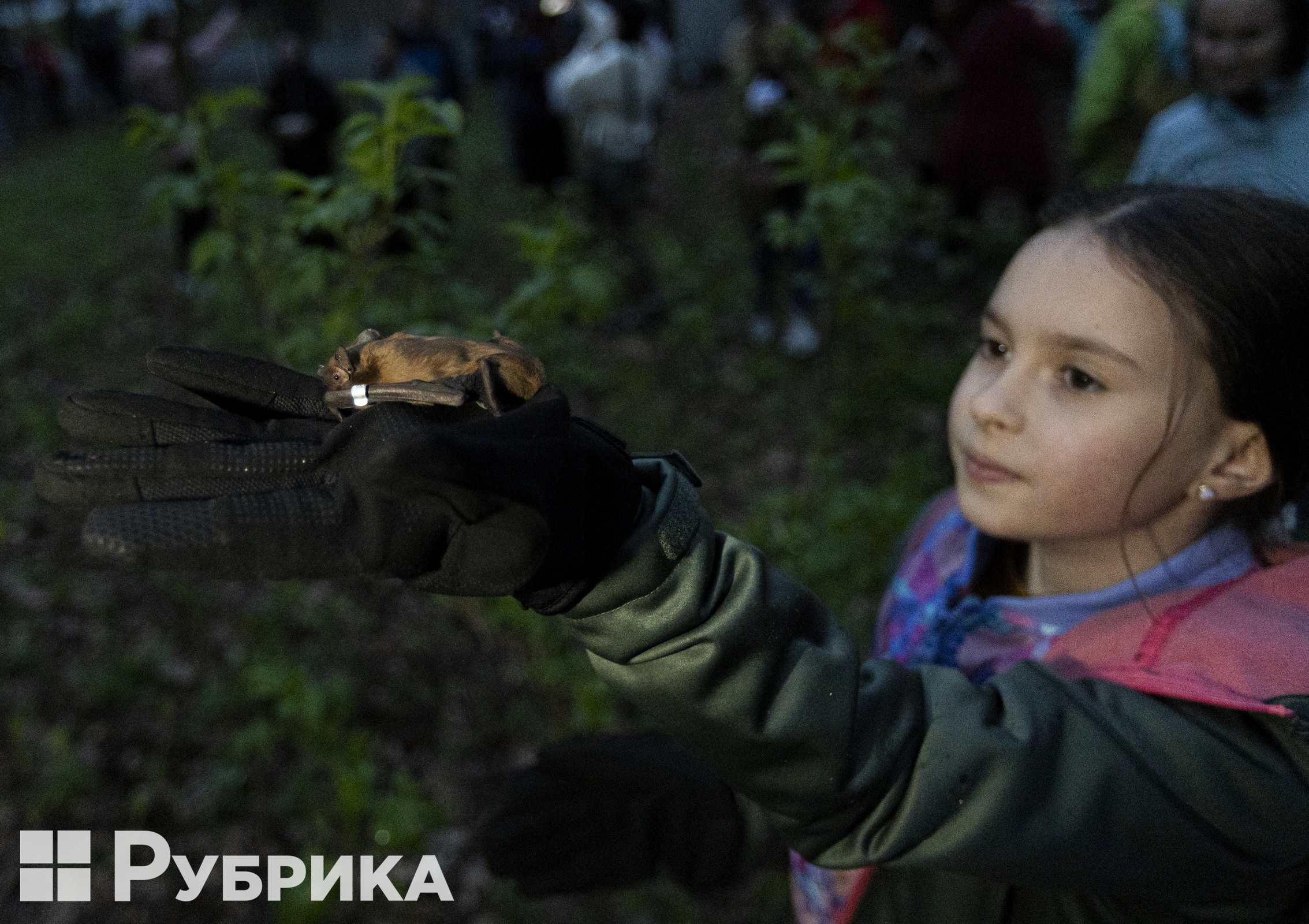
What's the problem?
Bats are beneficial creatures that regulate the population of insects in nature and are predators of pests in fields, gardens, and orchards. They hunt insects harmful to humans, such as mosquitoes and moths, and eat beetles, which gardeners constantly battle. One bat can consume close to a kilogram of insects in a season.
However, bats have been disappearing due to various problems. The Bern Convention and the Agreement on the Conservation of Bats in Europe recognize all European bat species as ones needing protection.
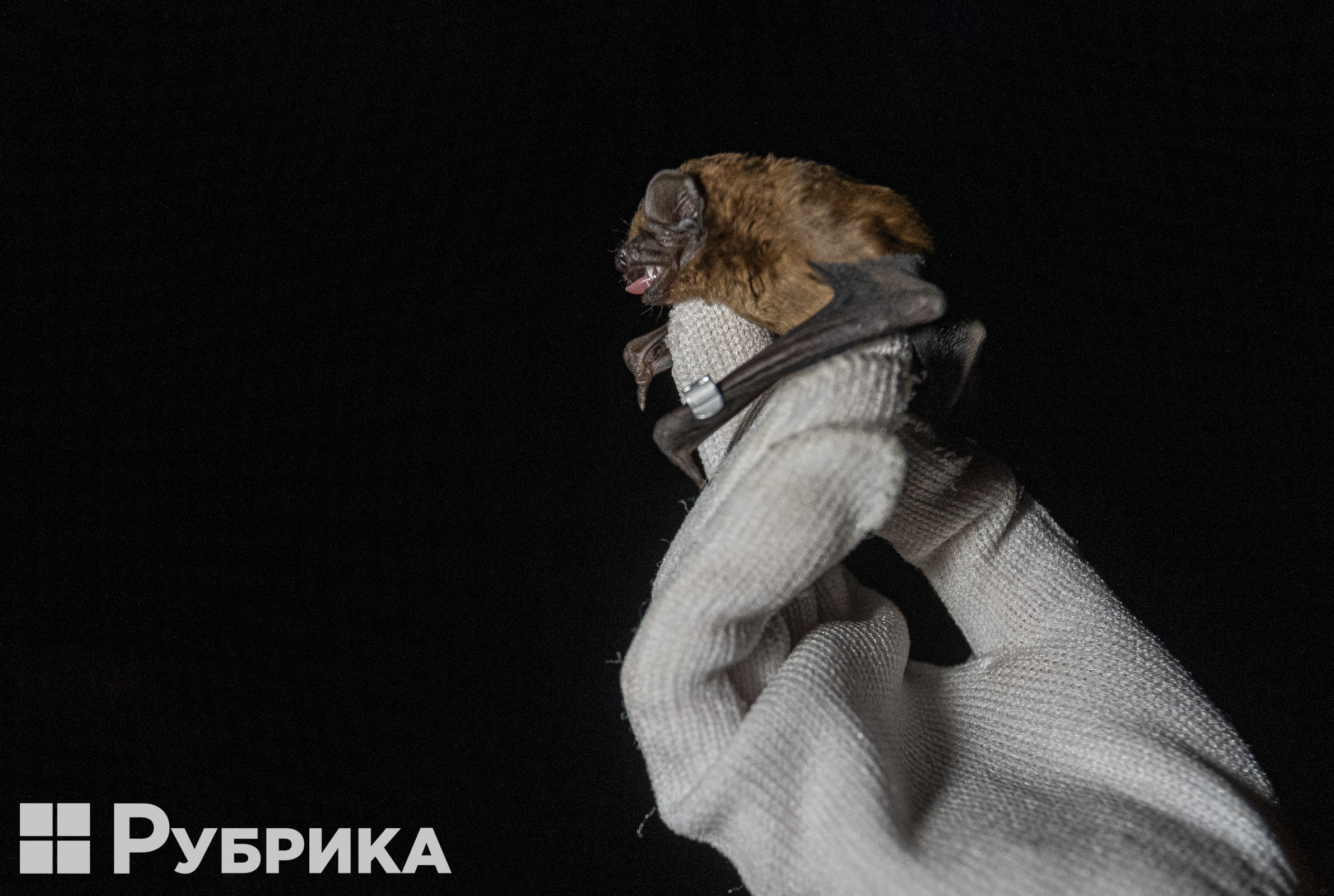
Over the last 70 years, bats have changed their way of life. Because most bat species are migratory and can cover distances of up to 2,500 kilometers, they used to migrate to warmer countries for the winter. Bats from the forests of Ukraine migrated to the Balkans, but as cities grew, the shapes and materials of buildings changed, and the type of wintering for bats underwent a revolutionary transformation.
Instead of migrating over one and a half thousand kilometers, bats now choose shorter distances, for instance, from the forest to a multi-story apartment building. They form colonies for wintering in attics, under balcony cladding, and in old window frames, where they enter into winter hibernation. In the best-case scenario, they remain there until spring, but now, more often than ever, they don't survive.
Winter warm spells wake bats up, and they die from hunger and exhaustion because there are no insects to feed on in winter. In cities, people's prejudice against these animals, fear, and simply lack of knowledge also pose a significant threat to bats. In early 2024, a woman in the Ukrainian city of Poltava who was repairing her balcony discovered a colony of bats under the cladding and threw almost 1,500 of them down from the 8th floor.
"These animals were in a state of hibernation; they couldn't orient themselves because it takes some time for a bat to wake up and warm up before it can react and fly. A colony of hibernating bats was simply thrown from the 8th floor, and more than 500 of them died from hypothermia or injuries," says Aliona Shulenko, a specialist at the Ukrainian Bat Rehabilitation Center.
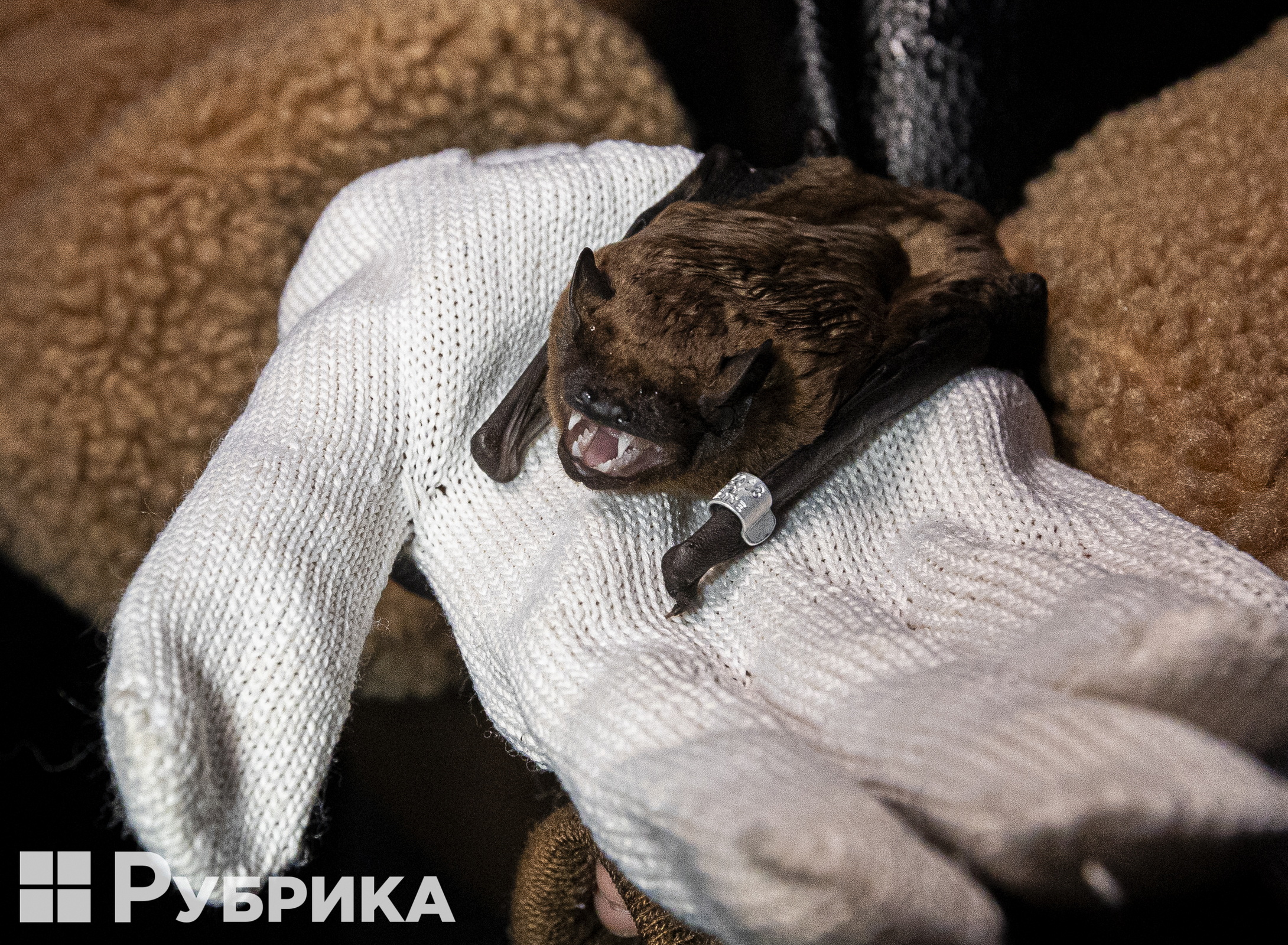
Wind farms also threaten bats' survival. Their impact on the species is particularly noticeable in the EU countries, which use more wind energy than Ukraine, says Anton Vlashchenko, head of the Ukrainian Bat Rehabilitation Center.
"If wind turbines are built along migration routes, bats flying past may be injured or killed. It seems to us from a distance that the blades rotate very slowly, but their speed is about 100 km/h," says Anton Vlashchenko. "Because there's a low-pressure zone around turbines, bats lose orientation and suffer barotrauma [tissue damage]. They may be severely injured or killed by the blades."
Two hundred thousand bats die each year in Germany because of wind turbines, and if you consider the Romanian, French, and Italian coasts, which are dotted with wind farms, the number of bat casualties may reach millions.
Since Russia started its full-scale war against Ukraine in 2022, local bats have encountered threats to their lives everywhere. Explosions on the front lines stun the mammals, which drop on the ground, disoriented, and become easy prey for cats or birds of prey.
The future of these animals depends entirely on environmental changes and people's attitudes toward them. Right now, caring Ukrainians are on a mission to help bats survive in cities and beyond.
What's the solution?
Front-line bat called Maliuk
A special guest attended the bat release event in Kyiv. Vladyslav Zhuravel, a retired soldier who was once a decorator in civilian life, served near the front-line town of Kostiantynivka, where explosions became more frequent and louder earlier this year.
One night, after the explosions, Vladyslav noticed a bat lying on the ground by chance. He didn't want to leave the animal, likely stunned, behind, so he took the bat in a box, but he didn't know what to do with it on the front line. He started looking for information on what to do with the bat and got in touch with volunteers from the Ukrainian Bat Rehabilitation Center.

"We tried to find ways together to transport the bat to the Ukrainian Bat Rehabilitation Center, but the volunteers couldn't reach the combat zone. As a result, they sent me a 'Survival Kit for Bats' — tweezers for feeding, larvae, and bags for containment," the soldier says.
That's how the story of the front-line bat, nicknamed Maliuk, which means "Baby" in Ukrainian, began. Vladyslav became thrilled with the process — he carefully woke up the little animal every day, groomed it with a soft toothbrush, and fed it with tweezers. Using skills from his previous profession, the soldier built small furniture for Maliuk and started sharing his experience on X (former Twitter) — the audience was thrilled.
Сьогодні крайній день, як годую Малюка перед гібернацією. Якраз завтра прийдуть замовлені ваги і метеостанція. Перед сном зважу кажана, щоб можна було порівняти вагу згодом. Гігрометр потрібен щоб контролювати вологість у його відсіку. Також візьму завтра в зоомагазині бокс. pic.twitter.com/bW27ktS9Mq
— Владислав Журавель (@VladiZhuravel) March 13, 2024
Later, Vladyslav got wounded in combat and was evacuated to safety, taking Maliuk with him. Back home, he crafted a space capsule for the bat and put it in his refrigerator to hibernate.
"The bat lived in the fruit storage of the refrigerator," Valdyslav shares.
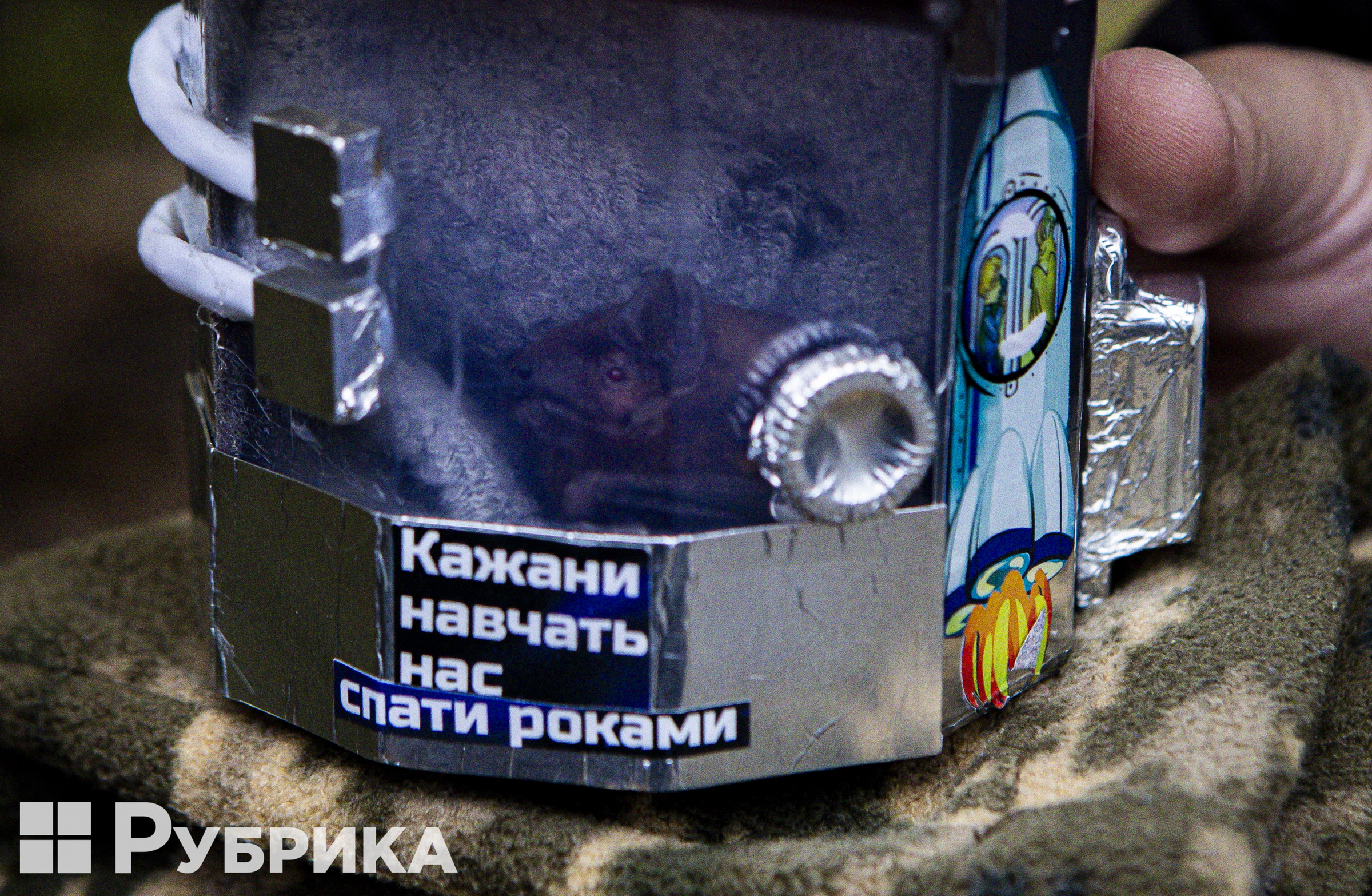
At the release event in Kyiv, Vlad set Maliuk free into the wild along with other bats. The soldier says it's not the end of their story because the bat's movements — like all others released from the rehabilitation center — can likely be tracked because all animals have special ID rings on their claws. The rehabilitation hub's leader, Anton Vlashchenko, says environmentalists use rings to learn about bat migration within Ukraine, so if Maliuk ends up in their hands in the winter, which often occurs with many of the bats after the release, the center will know.
The story of Vladyslav Zhuravel and Maliuk, the bat, is unique because bats usually don't stay with their rescuers. They are more often transferred to the bat rehabilitation center, which has saved a record-breaking number of bats this year.
6,500 rescued bats
That's just from this past winter
The Feldman Eco Park Bat Rehabilitation Center has been operating since 2013. During the winter season, it typically receives 2,500 to 3,000 bats. However, this past winter exceeded all volunteers' expectations.
"This season was extremely challenging for us — both for the bats and for the entire team. We took in a record number of bats for rehabilitation — over 6,500," says the center's specialist, Aliona Shulenko. "We've never experienced anything like this before. We never had a moment to catch our breath; something was happening daily."
The bat rescue season of 2023–2024 began in November when Karazin University in the city of Kharkiv was replacing windows. Aliona says almost every window out of 800 replaced frames had bats hiding underneath.
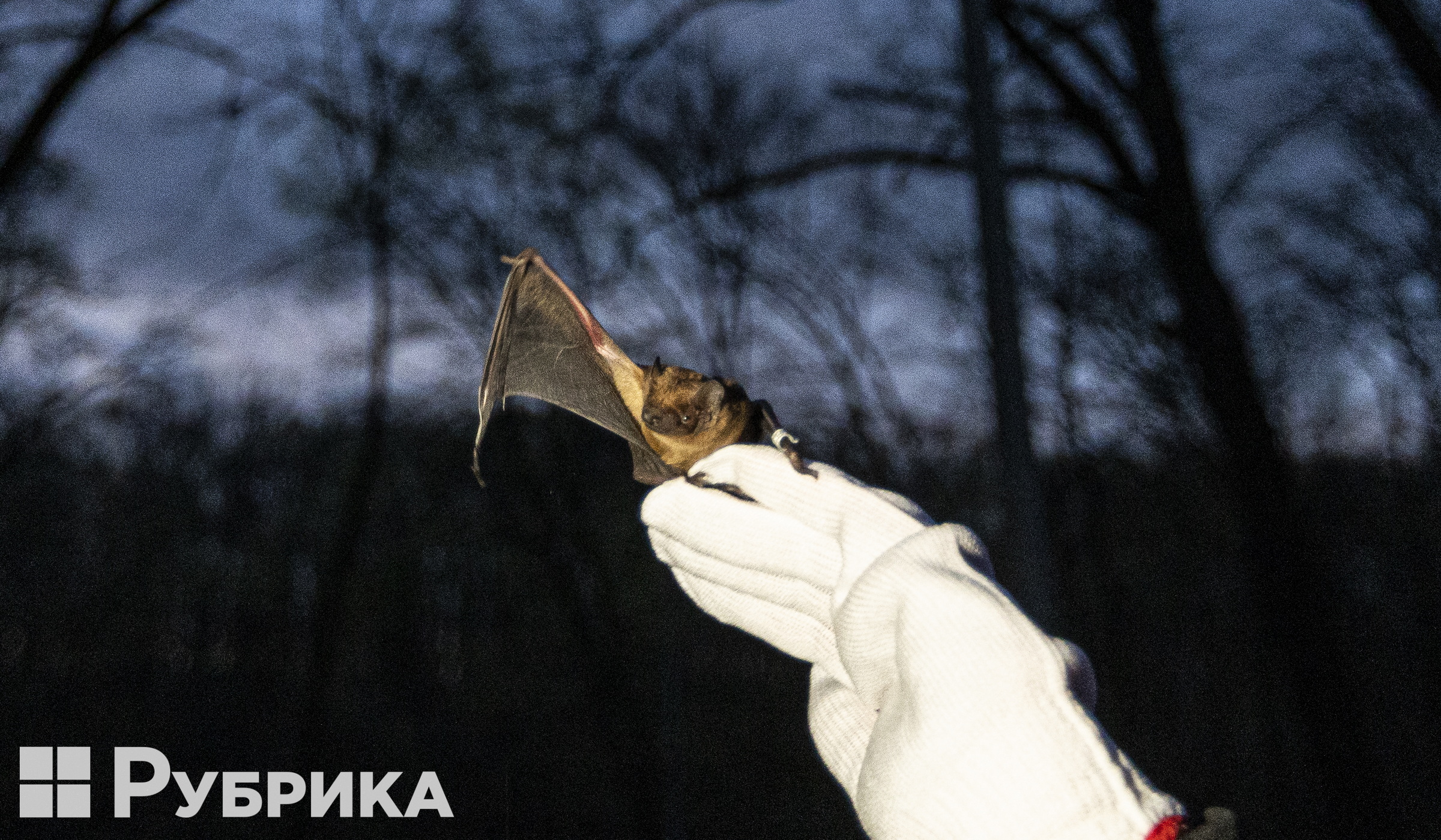
"We took shifts working with the repairmen every day. Sometimes we rescued two bats in one day, sometimes the number was 500," she says, adding that about 2,500 bats from Karazin University were rescued and brought to the Ukrainian Bat Rehabilitation Center.
Animal welfare activists worked in this mode for a month, accepting bats from other cities. When the Christmas and New Year holidays were coming to a close, a tragedy happened in Poltava when many bats almost died. Even then, volunteers managed to save most of the animals.
"Our veterinarians worked tirelessly all winter, and they're still working hard — the types of injuries they dealt with could fill an encyclopedia," Aliona recalls. Volunteers didn't come across life-threatening cases in Kyiv, but concerned citizens brought 200 bats to the rehabilitation center over the winter.
Bats in "Donbas" refrigerators
Once a bat arrives at the rehabilitation center, it's weighed and treated if needed, as drowsy bats often fall from heights and get injured.
An underweight bat will not survive hibernation and will die from hunger, so veterinarians feed the animal until it is ready. Aliona Shulenko showed Rubryka how this procedure works. She carefully holds the bat in her hand and feeds it larvae with tweezers, available in every pet store, and syringes.
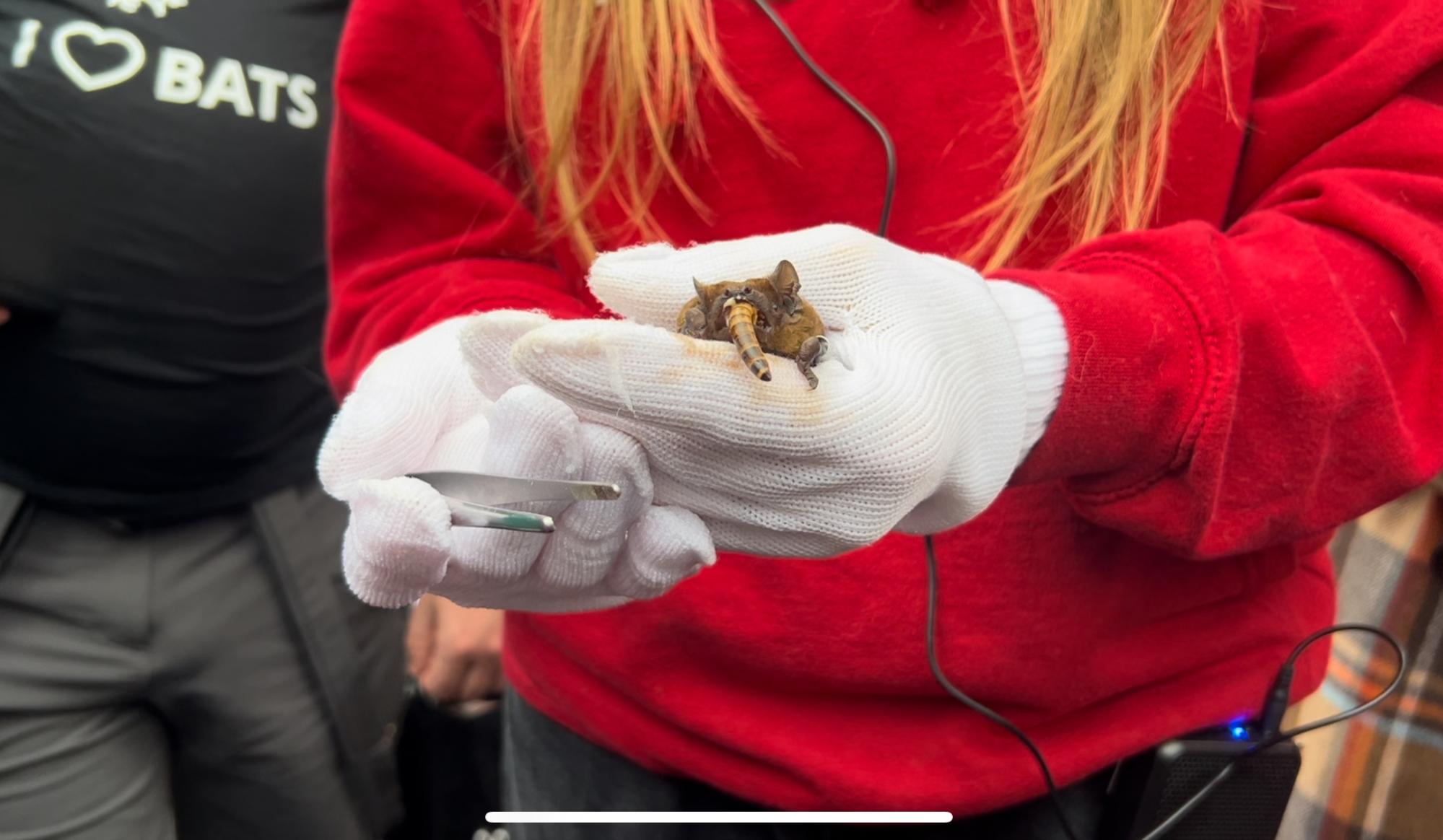
"Bats usually feed in flight, catching insects and eating them on the move. So when we feed them with tweezers, it's a new way for them. Sometimes, it takes a long time to feed one bat. Imagine having to feed six and a half thousand bats!" Aliona says.
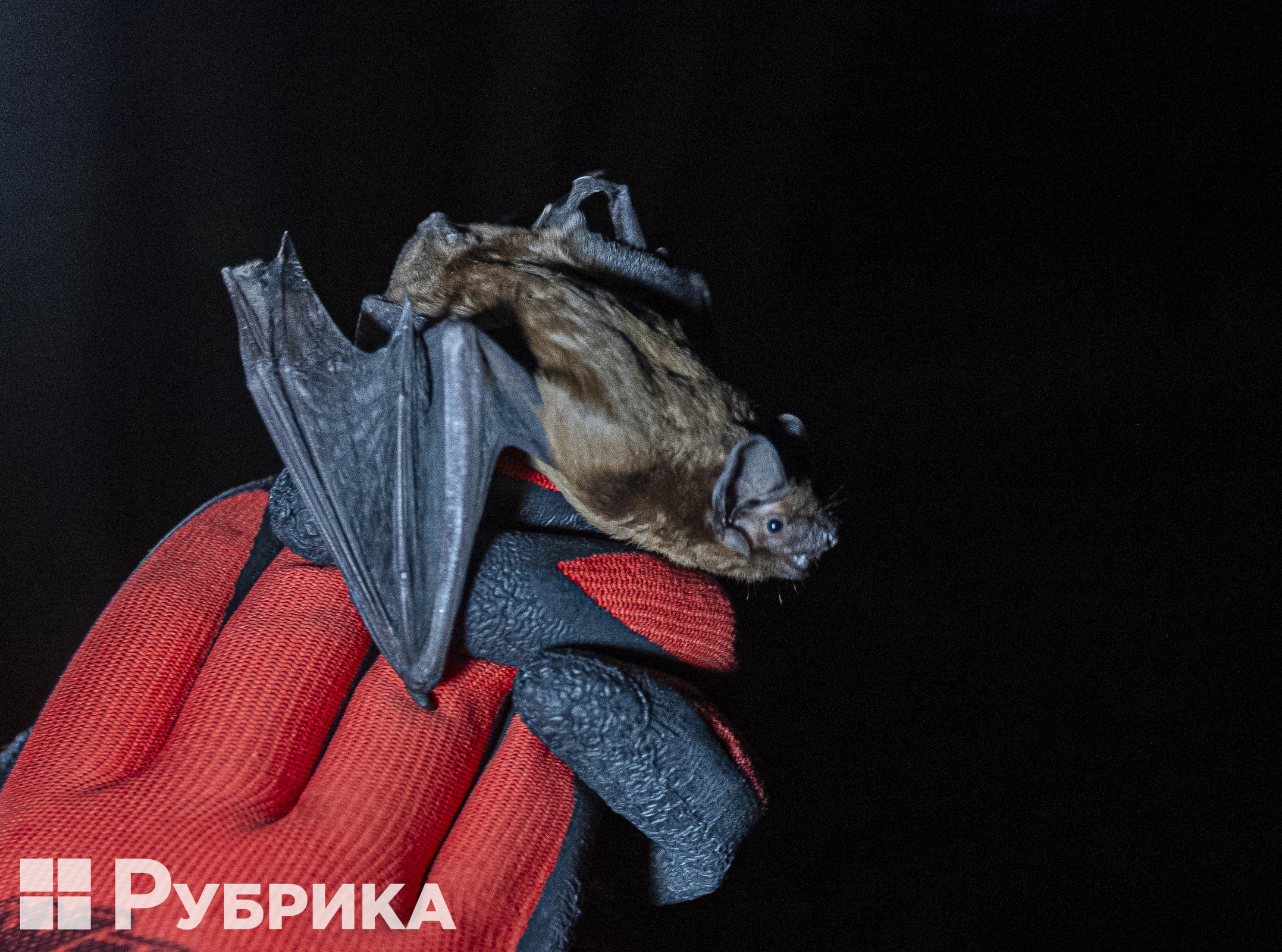
In rehabilitation, almost all bats are kept in cotton bags, with up to 10 creatures in each.
"They can breathe in the bags and have everything they need there, clinging on and hanging however they like. We have a separate room, fenced with mesh, with nails on the walls. We hang these bags there, and when it's time to feed and give water to the bats, we take them out one by one," says Aliona.
When a bat's weight reaches the norm of about 30 grams, they're transferred to a cold room, where the animals enter torpor — a state where all metabolic processes in the body slow down. When the bat finally falls asleep, they're moved to the refrigerator.
"Our refrigerators are old Ukrainian models, 'Donbas' or 'Dnipro,' which maintain the necessary humidity level for the bats. We cannot use new refrigerators because of the no-frost systems, which dry out the air," Aliona explains.

When bats end hibernation, they're released into the wild. The center's volunteers make the event public, showing the bats to visitors and dispelling numerous myths about these creatures. They even allow people to release bats themselves.
"We organize educational events to show people that bats are not scary, not pests, that they're not vampires and don't attack people," says the animal rights activist.
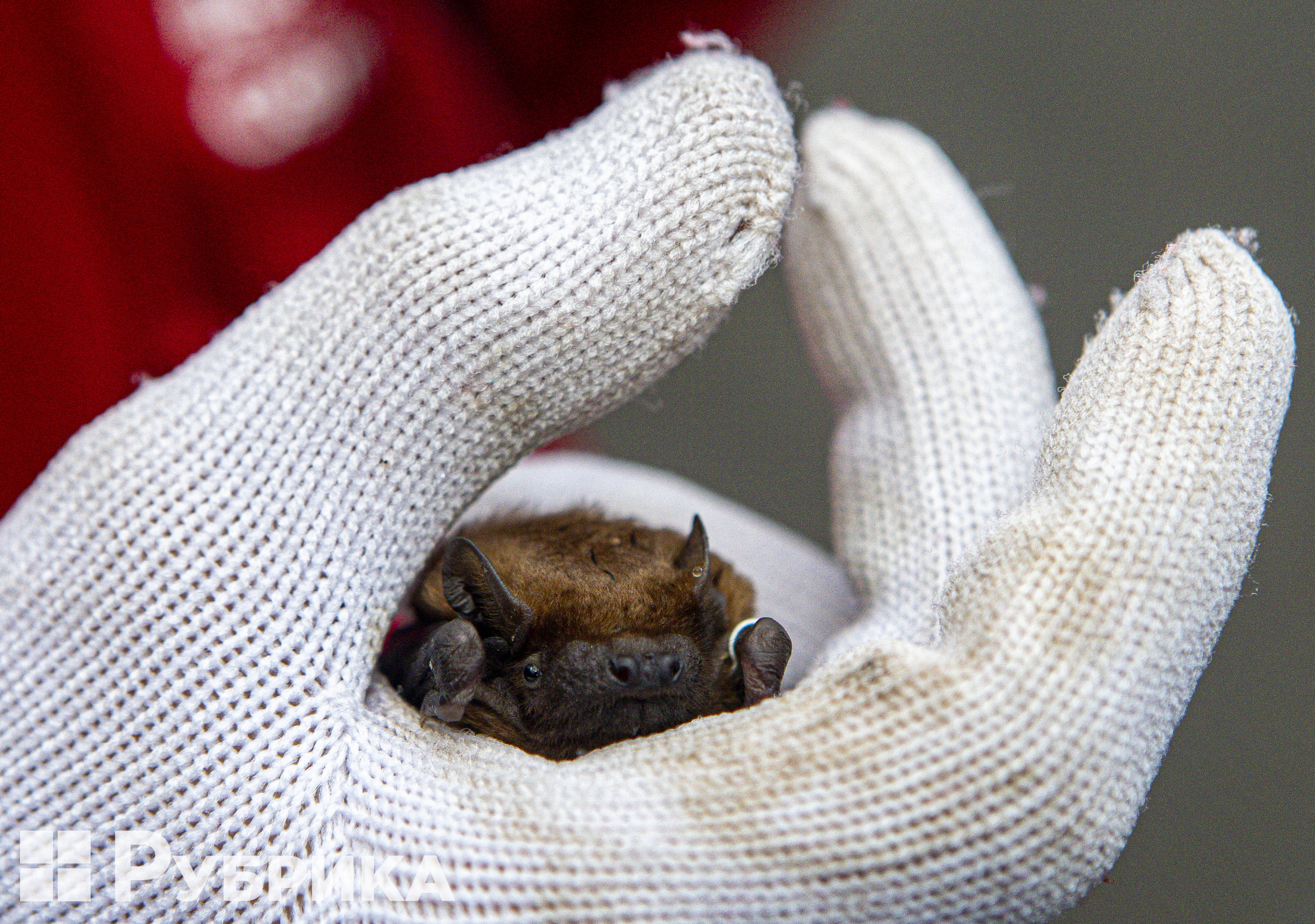
You've found a bat. What to do?
The rules for dealing with bats depend on the time of day and year, as well as the location where the bat was found. All possible scenarios with detailed instructions are available on the Ukrainian Bat Rehabilitation Center's website, so we recommend going there and learning them first.
However, a few general rules apply:
- First and foremost, don't panic. The situation is stressful not only for you but also for the bat. Don't shoo it away with random objects to avoid causing injury.
- If you have contact with a bat, remember that despite their small size, bats have sharp teeth and can also carry rabies, such as many other animals, including squirrels, rodents, cats, and dogs. Before picking up the found bat, put on sturdy gloves, such as leather ones, or two pairs of fabric gloves on each hand.
- If you're moving the bat into a container, it should NOT be airtight but should close tightly, like a cardboard box with a taped lid. You can make a few air holes.
- Contact specialists at a bat rehabilitation center. Each situation is unique, and the volunteers will advise you on the correct course of action. Contact details for the center in Ukraine are available here.
Newsletter
Digest of the most interesting news: just about the main thing



